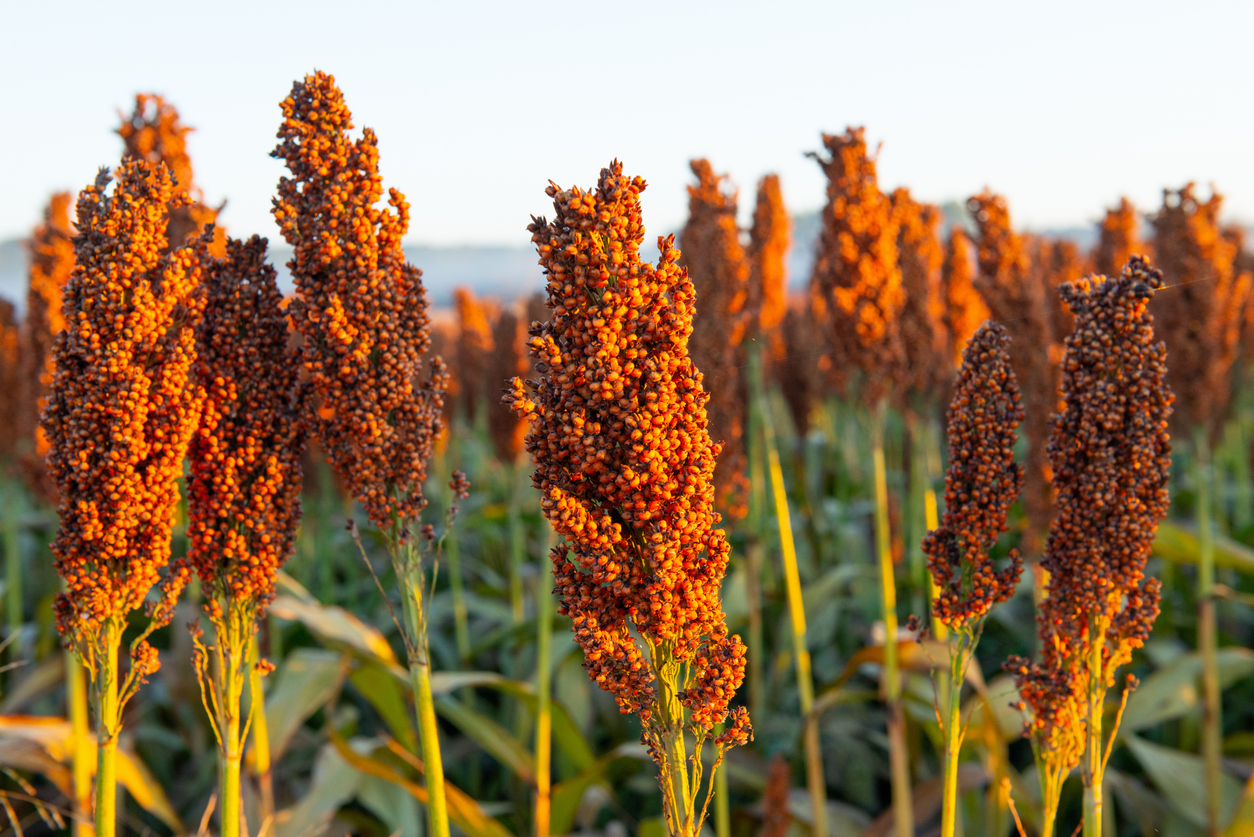
Researchers Identify Genes that Help Sorghum Resist Striga by Preventing its Germination
February 19, 2025| |
Chinese scientists have identified two specific genes in sorghum, SbSLT1 and SbSLT2, that confer resistance to Striga, a major parasitic plant responsible for major crop losses. When the two genes are knocked out, the plant's resistance to Striga, commonly known as witch-weed, significantly increases.
This discovery sheds light on the natural defense mechanisms of sorghum. Also, it demonstrates how AI can predict critical amino acid sites in strigolactone (SL) transporters—insights that could enhance resistance to parasitic plants in various crops. The research team from the Institute of Genetics and Developmental Biology of the Chinese Academy of Sciences, China Agricultural University, Syngenta Group China, Yazhouwan National Laboratory, and the University of Chinese Academy of Sciences pinpointed key amino acid sites in SL transport channels that enhance crop resistance to parasitic plants.
The experiments showed that sorghum lines with single or double knockouts of these transporters exhibit significantly reduced SL secretion from roots, leading to decreased Striga germination and parasitism in field experiments and consequently reducing grain loss under Striga infestation. The sorghum plants with knocked-out SbSLT1 and SbSLT2 genes exhibited 67–94% lower infestation rates and 49–52% less yield loss.
For more details, read this article or download the paper in Cell (needs a subscription).
| |
You might also like:
- Review Shows Advancements in Gene Editing of Sorghum for Crop Improvement
- Study Identifies Rhizobacteria to Fight Striga and Boost Sorghum Yields in Ethiopia
- Fighting the Parasitic Weed Striga
Biotech Updates is a weekly newsletter of ISAAA, a not-for-profit organization. It is distributed for free to over 22,000 subscribers worldwide to inform them about the key developments in biosciences, especially in biotechnology. Your support will help us in our mission to feed the world with knowledge. You can help by donating as little as $10.
-
See more articles:
-
Plant
- Researchers Identify Genes that Help Sorghum Resist Striga by Preventing its Germination
- Scientists Have Identified Genetic Defense Against Soybean Cyst Nematodes
- Study Elucidates Salt Tolerance Breeding in Plants
- ISAAA and DA Biotech Program to Hold a Webinar on Regulatory Frameworks for New Breeding Techniques in Crops
- Report Tackles China's Agricultural Transformation Plans for 2025
-
Animal
- Engineered Animals to Fight Mercury Pollution
- Brazilian Fish and CAT Introduce First Gene-Edited Tilapia in Brazil
-
Environment
- Genetic Insights Reveal How Plants Adapt to Climate Change
-
Read the latest: - Biotech Updates (December 10, 2025)
- Gene Editing Supplement (November 26, 2025)
- Gene Drive Supplement (February 22, 2023)
-
Subscribe to BU: - Share
- Tweet

